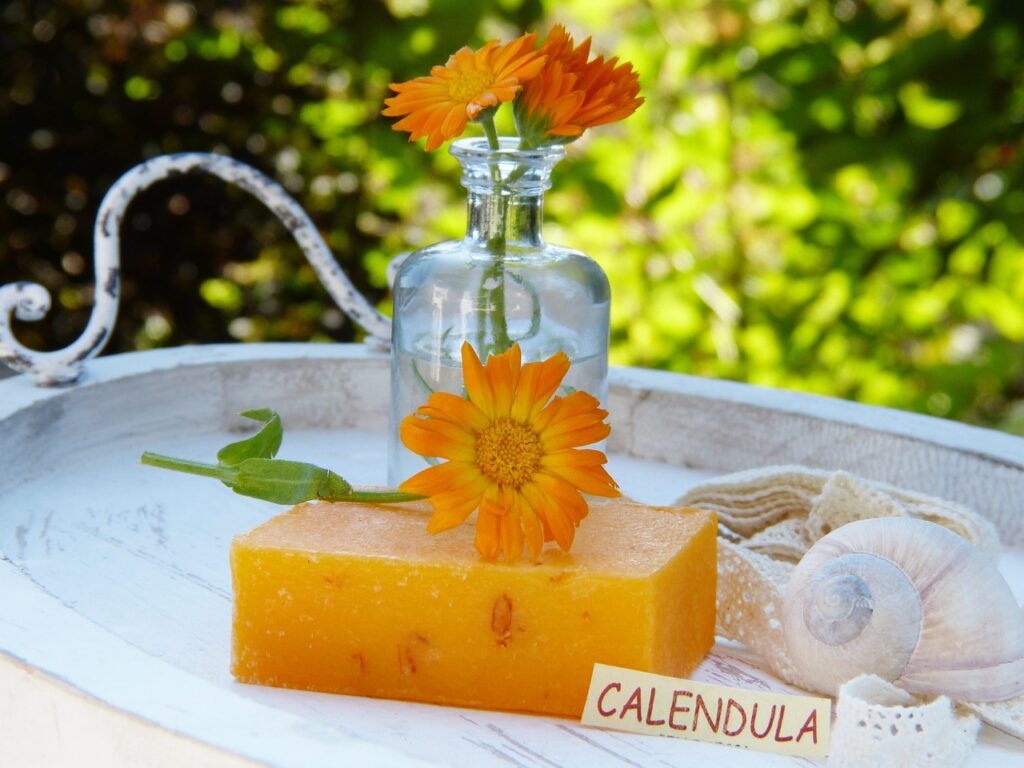If you’re looking for a lucrative way to generate income, look no further than Amazon’s Handmade category. With the steady rise in demand for unique and personalized products, selling handmade items on the e-commerce giant has become a promising opportunity. Whether you’re an artist, craftsperson, or a creative individual with a knack for handmade creations, Amazon Handmade offers the perfect platform to showcase and sell your products. In this article, we’ll explore how you can tap into this thriving marketplace and make money with your handmade items on Amazon.
Understanding the Amazon Handmade Marketplace
Definition of Amazon Handmade
Amazon Handmade is an online marketplace established by Amazon that specifically caters to artists, artisans, and creators who sell handmade products. Unlike the regular Amazon marketplace where mass-produced and factory-made items dominate, Amazon Handmade provides a platform for individuals who are passionate about crafting unique and personalized products.
The potential of selling on Amazon Handmade
Selling on Amazon Handmade comes with significant potential for success and financial gains. With millions of active customers on Amazon, you have the opportunity to reach a massive audience and expand your customer base. The platform also provides various tools and features that can help you drive sales and increase your visibility within the marketplace. Additionally, Amazon’s reputation and trustworthiness can help give you a competitive edge and instill confidence in potential customers.
Comparing Amazon Handmade to other online platforms
When considering selling your handmade products online, it’s essential to evaluate different platforms to determine which best suits your business goals. While there are several online marketplaces available, Amazon Handmade stands out due to its vast customer base, robust infrastructure, and extensive reach. Unlike other platforms that are dedicated solely to handmade products, Amazon Handmade benefits from being part of the larger Amazon ecosystem, which includes capabilities such as Prime shipping and easy integration with other Amazon services.
Products Suitable for Amazon Handmade
Defining ‘handmade’ products
To sell on Amazon Handmade, it’s vital to understand what qualifies as a ‘handmade’ product. Handmade products involve a significant level of manual craftsmanship and must be created by an individual or a small team. These products should not be mass-produced, and each item should have distinct variations or personalization options for customers to choose from. By maintaining the core principles of craftsmanship, uniqueness, and personal touch, you can ensure your products meet Amazon Handmade’s criteria.
Product categories in Amazon Handmade
Amazon Handmade offers a wide range of product categories to accommodate various handmade creations. Some popular categories include jewelry, home decor, clothing, accessories, and art. However, it’s important to do thorough research and understand the demand and competition within each category before finalizing your product selection. By choosing the right category and narrowing down your niche, you can position yourself favorably and attract a specific target audience.
Product ideas for Amazon Handmade
If you’re looking for inspiration or ideas for handmade products to sell on Amazon Handmade, consider exploring emerging trends and unique niches. For example, personalized and customized products like engraved jewelry or monogrammed accessories are often sought after by customers looking for a special touch. Additionally, eco-friendly and sustainable products have been gaining popularity, such as reusable household items or handmade skincare products made from natural ingredients. Keep an eye on consumer preferences and identify opportunities to create products that align with current market demands.

Setting up an Amazon Handmade Store
Requirements for opening a store
Before setting up your Amazon Handmade store, it’s crucial to ensure you meet all the requirements outlined by Amazon. Some key prerequisites include having a Professional Selling Plan on Amazon, providing accurate and detailed information about your business and products, and verifying that your products meet the handmade criteria. It’s also essential to double-check any specific documentation or licenses required for selling certain types of items, such as jewelry or cosmetics.
Steps in setting up your store
Setting up your Amazon Handmade store involves several steps to ensure your products are correctly listed and presented to potential customers. Firstly, you need to create your seller account and provide all the necessary information, such as your business name, contact details, and bank account information for payment processing. Then, you will be prompted to set up your store profile, including a logo, banner, and a compelling brand story. Afterward, you can start listing your products, ensuring that you provide accurate descriptions, high-quality images, and relevant keywords to increase visibility.
Creating appealing product listings
To stand out from the competition and attract potential customers, it’s crucial to create appealing and informative product listings on Amazon Handmade. Start by writing compelling and detailed product descriptions that highlight the unique features and craftsmanship of your products. Include measurements, materials used, and any customization options available. Additionally, high-quality product images are essential for capturing customers’ attention, so invest in professional photography or master the art of taking captivating product photos yourself. Finally, optimize your listings with relevant keywords that customers are likely to search for, improving your chances of appearing in relevant search results.
Creating high-quality handmade products
Importance of high-quality products
Creating high-quality handmade products is paramount to the success of your Amazon Handmade business. Customers expect exceptional craftsmanship, attention to detail, and durable materials when purchasing handmade products. By focusing on delivering top-notch quality, you not only satisfy your customers but also establish a reputation for excellence, leading to positive reviews and word-of-mouth referrals. In addition, high-quality products are less likely to be returned or refunded, reducing the negative impact on your sales and income.
Resources for improving product craftsmanship
If you’re looking to improve your product craftsmanship, there are several resources available to help you refine your skills. Online tutorials and classes can provide valuable guidance and insights into different techniques and materials. Additionally, joining local craft communities or attending artisan fairs and workshops can connect you with experienced artisans who can share their knowledge and offer constructive feedback. Continuous learning and improvement are crucial for staying competitive and delivering exceptional handmade products.
Adding a personal touch to your products
One advantage of selling on Amazon Handmade is the ability to add a personal touch to your products. Personalization creates a unique selling point and helps build customer loyalty. Consider offering customization options such as monograms, custom engravings, or color variations. Additionally, including a handwritten note or a small freebie with each purchase can go a long way in creating a memorable and positive experience for your customers. These personal touches can leave a lasting impression and increase the chances of repeat business and referrals.

Pricing Your Handmade Products
Understanding product pricing
Pricing handmade products can be challenging, as you need to find the right balance between covering your costs, making a profit, and remaining competitive in the marketplace. Start by calculating your production costs, including materials, labor, and any additional expenses. Then, consider the perceived value of your product and the overall demand within your niche. Researching similar products on Amazon Handmade can provide insights into the price range you should aim for. Finally, remember to factor in fees, shipping costs, and any discounts or promotions you may offer.
How to price your products competitively
To price your products competitively on Amazon Handmade, you need to strike a balance between attracting customers with an attractive price point and ensuring a reasonable profit margin. While it may be tempting to underprice your products to gain an initial advantage, it is not sustainable in the long run. Consider the quality, uniqueness, and level of craftsmanship you offer and align your prices accordingly. Be confident in the value you provide and communicate that value effectively through your product listings.
Balancing profit and competitiveness
While it’s essential to remain competitive with your prices, it’s equally important to prioritize profitability and sustainability. Make sure to account for all costs and expenses, including your time, overheads, and any reinvestment required to grow and improve your business. Regularly monitor your financials and adjust your prices if necessary to maintain profitability. Striking the right balance between profit and competitiveness ensures the long-term success of your Amazon Handmade business.
Promoting Your Handmade Products
The importance of marketing
To maximize your sales and visibility on Amazon Handmade, investing time and effort into marketing and promoting your products is crucial. While Amazon’s existing customer base provides some exposure, it’s important to go the extra mile to stand out in a crowded marketplace. Effective marketing can help increase brand awareness, attract new customers, and encourage repeat purchases. By highlighting the unique aspects of your handmade products and building a strong brand presence, you can differentiate yourself from competitors and capture the attention of your target audience.
Strategies for promoting your products
There are various strategies you can employ to promote your handmade products on Amazon Handmade. One effective approach is leveraging Amazon’s advertising platform, such as Sponsored Products or Sponsored Brands, to increase visibility and drive traffic to your listings. Another strategy is optimizing your product listings for keywords and utilizing search engine optimization (SEO) techniques to improve organic discoverability. Additionally, participating in relevant craft shows, local markets, or collaborative events can expose your products to a broader audience and help build brand recognition.
Using social media to boost sales
Social media platforms present an excellent opportunity to showcase your handmade products and engage with potential customers. Create social media accounts for your Amazon Handmade business and regularly share high-quality images, behind-the-scenes content, and customer testimonials. Consider partnering with influencers or bloggers in your niche who can help promote your products to their followers. Utilize social media advertising options, such as Facebook Ads or Instagram Ads, to expand your reach and drive traffic back to your Amazon Handmade store.

Customer Service and Interaction
Importance of excellent customer service
Providing excellent customer service is crucial for the success of any business, including your Amazon Handmade venture. Happy customers are more likely to leave positive reviews, recommend your products to others, and become loyal patrons. Aim to exceed customer expectations by offering prompt and helpful responses, resolving issues efficiently, and ensuring a smooth purchasing experience from start to finish. Building a reputation for exceptional customer service can set you apart from competitors and create a lasting impression on buyers.
How to handle customer inquiries and complaints
When it comes to handling customer inquiries and complaints on Amazon Handmade, responsiveness and attentiveness are key. Be proactive in addressing any inquiries promptly, providing accurate and detailed information to assist customers in making informed decisions. If a customer has a complaint or faces an issue with their purchase, handle the situation professionally and empathetically. Offer reasonable solutions, such as replacements or refunds, and make sure to communicate openly and transparently throughout the process. Resolving issues effectively can turn a potentially negative experience into a positive one and foster customer loyalty.
Personalizing customer interaction to boost sales
Personalization plays a significant role in building strong customer relationships and encouraging repeat sales. Consider incorporating personal touches in your customer interactions, such as addressing customers by name, sending personalized email newsletters, or offering exclusive promotions to loyal customers. Additionally, actively listen to customer feedback and suggestions, and use them to continually improve your products and overall customer experience. By making customers feel valued and appreciated, you can increase customer satisfaction and foster long-term loyalty.
Handling Logistics and Delivery
Explaining Amazon’s Fulfillment by Amazon (FBA) service
Amazon’s Fulfillment by Amazon (FBA) service offers sellers the option to store inventory in Amazon’s warehouses and let the company handle logistics and delivery. With FBA, Amazon takes care of order fulfillment, including picking, packing, and shipping, as well as customer service and returns. This service can save you time and effort, allowing you to focus on creating and improving your handmade products. It also offers the advantage of Prime eligibility, providing faster shipping and greater visibility to Prime members.
Benefits and drawbacks of using FBA
Using Amazon’s FBA service brings several benefits to Amazon Handmade sellers. First, it eliminates the need for storage space and packaging materials, as Amazon handles these aspects on your behalf. Additionally, FBA offers access to Amazon’s extensive and efficient fulfillment network, ensuring timely deliveries to customers. However, it’s important to consider the associated costs, such as storage fees and fulfillment fees, when utilizing FBA. Furthermore, relying solely on FBA may limit your ability to add personal touches or customization options to your packaging.
Alternative methods of delivery and fulfillment
While Amazon’s FBA service is convenient for many sellers, it’s not the only option for fulfillment and delivery. Some sellers prefer to handle these aspects themselves to maintain greater control over their products, personalization, and branding. If you choose to manage your fulfillment, consider partnering with reliable shipping carriers or utilizing third-party fulfillment services that specialize in handling handmade products. Whichever method you choose, ensure you have efficient systems in place to track orders, manage inventory, and provide timely and accurate shipping updates to customers.
Dealing with Returns and Refunds
Understanding Amazon’s returns policy
Amazon has a comprehensive returns policy in place to protect both buyers and sellers. Familiarize yourself with the policy to understand the guidelines and procedures for handling returns and refunds. For handmade products, Amazon allows customers to return items within 30 days of delivery in most cases. It’s important to be aware of any specific requirements or exceptions related to your product category, such as hygiene-related products or custom-made items. By understanding the returns policy, you can handle returns in a fair and professional manner.
How to handle product returns
When a customer initiates a return on Amazon Handmade, it’s essential to handle the process efficiently and professionally. Communicate clearly with the customer, providing instructions for returning the item and any associated refund or replacement options. Once the product is returned, carefully inspect it to ensure its condition aligns with your return policy. In case of any disputes or disagreements, follow Amazon’s guidelines for escalating the situation and providing evidence if necessary. Timely and accurate handling of returns contributes to maintaining customer satisfaction and mitigating potential negative feedback.
Impact of returns and refunds on your sales and income
Returns and refunds are an inevitable part of any business, including selling handmade products on Amazon Handmade. While they can temporarily impact your sales and income, it’s vital to manage them effectively to minimize any long-term negative effects. Analyze the reasons behind returns and identify any patterns or product-specific issues that can be addressed to reduce return rates. Respond to customer feedback and utilize it to improve your product quality and customer experience. By continuously striving for customer satisfaction, you can mitigate the impact of returns and maintain a positive reputation with buyers.
Scaling Your Amazon Handmade Business
Increasing product varieties
Once you’ve established a successful presence on Amazon Handmade, scaling your business involves expanding your product offerings. Consider adding new product lines or variations that complement your existing handmade products. Conduct market research to identify emerging trends or customer demands that align with your niche. By continually innovating and diversifying your product range, you can attract a broader customer base, increase sales, and strengthen your brand presence on Amazon Handmade.
Expanding your customer base
While Amazon Handmade already provides access to a vast customer base, it’s essential to explore additional avenues for expanding your reach. Collaborate with influencers or bloggers in your niche to expose your products to their audience and tap into their established following. Actively engage in social media platforms relevant to your target market, leveraging hashtags and engaging with potential customers. Additionally, consider participating in craft fairs, local markets, or similar events that attract your ideal customers. The key is to identify opportunities for exposure and consistently find ways to connect with new customers.
Employing efficient production methods
As your Amazon Handmade business grows, it becomes necessary to optimize your production processes to meet increasing demand effectively. Evaluate your current production methods and look for areas where you can introduce efficiencies or streamline workflows. Automating certain tasks or outsourcing specific steps can help you increase productivity and ensure consistent quality. However, remember to strike a balance between efficiency and the individual craftsmanship that makes your handmade products unique. By adopting efficient production methods, you can scale your business while maintaining the essence of handmade quality.
In conclusion, understanding the Amazon Handmade marketplace and effectively navigating its intricacies are essential for success. By defining handmade products, selecting suitable categories, and creating appealing product listings, you can position yourself favorably on the platform. Maintaining a focus on high-quality craftsmanship, pricing competitively, and actively promoting your products are key strategies for driving sales. Prioritizing excellent customer service, handling logistics efficiently, and managing returns professionally contribute to maintaining a positive reputation. Finally, scaling your business through product expansion, customer base growth, and efficient production methods allows you to maximize your potential on Amazon Handmade. With dedication, perseverance, and a commitment to excellence, your handmade business can flourish on this lucrative platform.

